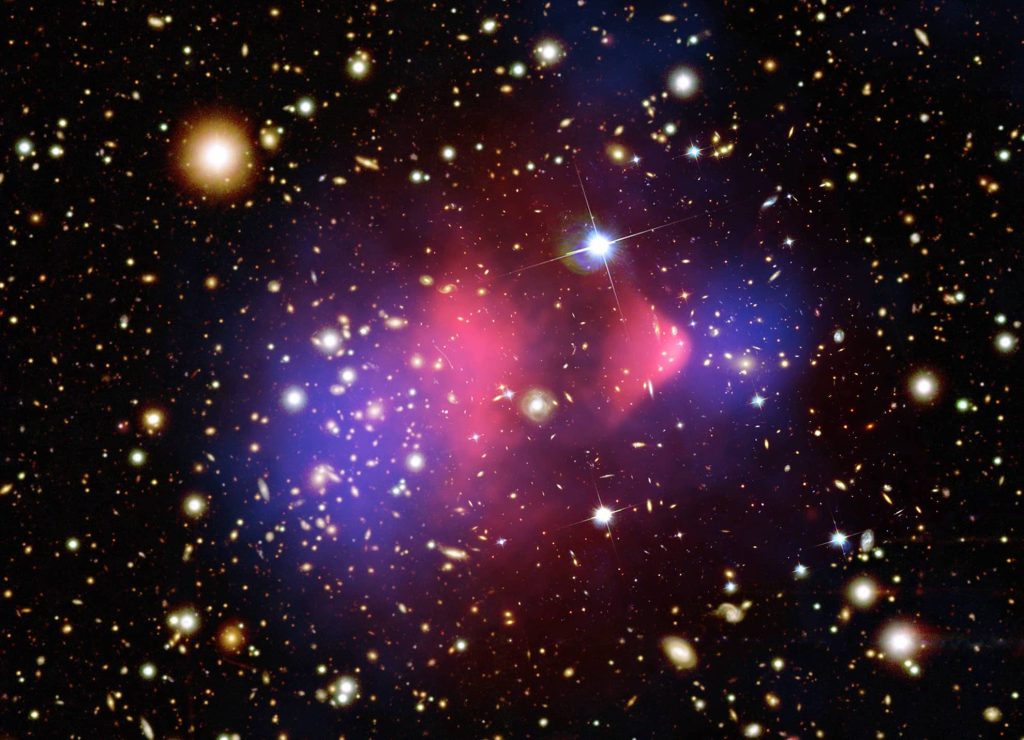
The ordinary atoms that make up the known universe, from our bodies and the air we breathe to the planets and stars, constitute only 5% of all matter and energy in the cosmos. The remaining 95% is made up of a recipe of 25% dark matter and 70% dark energy, both nonluminous components whose nature remains a mystery. Identifying the nature of dark matter, which constitutes most of the mass in the Universe, is one of the longest and most important outstanding problems in modern physics. One focus of my research is the search to solve this mystery.
Many theories postulate a dark matter particle, which interacts only weakly with normal matter, but clumps under the gravitational force to produce the scaffolding on which normal matter is arranged. I was one of the founders of the field of Dark Matter Direct Detection, which aims to determine the properties of the dark matter particle by searching for the rare interactions with normal matter in laboratory experiments. My early calculations (with Drukier and Spergel) were essential in persuading experimentalists to begin building underground detectors and led to the beginnings of what is now a worldwide effort. The main challenge in such experiments is distinguishing the background interactions with normal matter from interactions with dark matter. In early work, I proposed that an annual modulation of the interaction rate would be produced by the motion of the Earth through the ambient dark matter halo, a signal characteristic of dark matter that is being used by experimenters as a tool for dark matter detection. Currently I am working on a variety of dark matter tests and candidates. In one avenue of research, I am studying data of stellar motions in our galaxy taken by the GAIA Space Satellite to learn about the nature of dark matter. The discovery of most of the mass in the Universe will be a seminal moment for humanity.
A new research direction Freese and collaborators proposed in 2018 is Paleodetectors. In lieu of giant vats of xenon liquid or other detector material, the idea is to look for tracks in ancient rocks from 5 kilometers below the surface of the Earth. These minerals have been collecting tracks for almost a billion years from dark matter particles hitting the rocks. In addition to dark matter, the rocks make good detectors for neutrinos, cosmic rays, and even reactor neutrinos. The idea of paleodetectors has now gained traction with experimentalists and with the funding agencies, including substantial funding from the NSF and the Moore Foundation. This new research direction is taking off!
